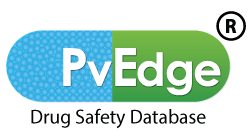Pharmacovigilance is essential for keeping drugs safe throughout their lifecycle. One important aspect of this is signal detection, which helps identify safety problems related to drugs. With the increasing amount of data in healthcare, traditional signal detection methods are struggling to keep up. This is where data mining plays a big role by improving how safety signals are detected and analyzed.
Signal detection is the process of finding new or changing safety information about a drug. This can involve discovering unexpected side effects, changes in the number of known side effects, or even new safety concerns. Effective signal detection is key to managing risks and meeting regulatory requirements.
The Role of Data Mining
Data mining helps extract useful patterns from large amounts of data. In pharmacovigilance, it can greatly improve signal detection by analyzing vast datasets quickly and accurately. Here’s how:
Managing Large Volumes of Data
Healthcare data is growing rapidly through sources like electronic health records, social media, and drug safety reports. Data mining tools like PvEdge® can analyze these huge amounts of data efficiently. This helps pharmacovigilance teams find potential safety signals that might be missed with traditional methods of manual review.
Finding Hidden Patterns
Data mining can uncover hidden patterns that suggest possible safety concerns. For example, advanced algorithms can look through patient reports to spot clusters of adverse drug reactions (ADRs) linked to a particular drug or see if there are unusual trends in how often certain side effects are reported.
Real-Time Signal Detection
With automation, data mining allows pharmacovigilance teams to monitor data in real time. This means potential safety issues can be identified much faster, leading to quicker responses and interventions when needed. Tools like PvEdge® enable real-time tracking, helping improve reaction times in cases of emerging drug risks.
Predicting Potential Risks
By looking at historical data, data mining can create models that predict which drugs might cause safety issues before they affect many patients. By analyzing patterns from previous reports, these tools can help predict which drugs might have higher risks for certain groups of people.
Challenges to Consider
Despite the many benefits, using data mining in signal detection also has challenges:
- Data Quality: The results of data mining depend on the quality of the data. If reports are incomplete or inaccurate, there might be false alarms or missed signals.
- Regulatory Compliance: Pharmacovigilance must follow strict rules. The methods used in data mining need to be clear, repeatable, and compliant with these regulations to be trusted.
- Signal Interpretation: Just finding a signal doesn’t mean there is a problem. Experts need to carefully evaluate and verify the signals before deciding whether a drug is truly unsafe.
Data mining is transforming how pharmacovigilance teams detect safety signals, enabling quicker identification of risks and faster responses. Tools like PvEdge® help manage large data, spot patterns, and predict potential risks. At Sarjen Systems Pvt Ltd, we are proud to offer innovative solutions like PvEdge® to enhance patient safety and ensure compliance in the ever-evolving healthcare Interface.



